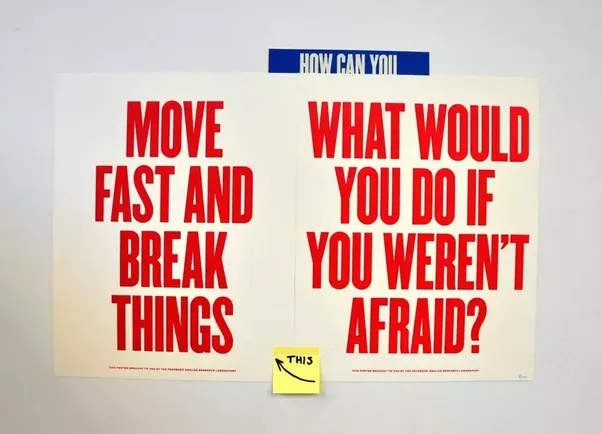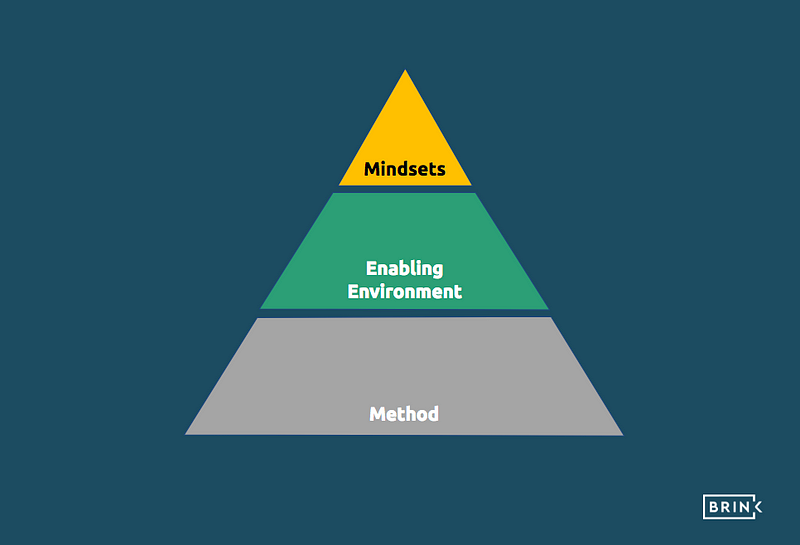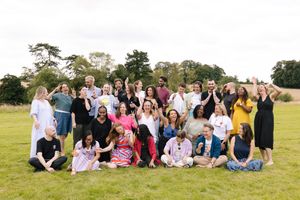
I have long been fascinated by ideas being brought to life, what makes some thrive and others fail. At Brink we explore this topic in detail through our work, our research, and our interviews with innovation leaders, and we’ve found that regardless of the sector or type of organisation, there are recurring themes behind what makes a successful culture of innovation. We have seen time and again that whilst you can teach innovation method and techniques in organisations (think Lean Startup, Human-Centred Design, agile), they don’t enable innovation on repeat. To truly build innovation capability that can continuously test and ship the ideas that maintain a competitive edge, you need a culture that enables innovation across the entire firm.
Innovation method is not enough
Without the environment that can gather an idea from anywhere and let it incubate, take root, grow, pivot, get in front of customers and scale or be killed, then innovation efforts are set up to fail. And even then, it’s not about crafting a single killer idea, but rather acknowledging that 100s of seeds must be sown for just a few to successfully flourish.

It’s easy to pay lipservice
We’ve all witnessed the rise of shiny new innovation labs, and seen the bold innovation missions and mantras written on the office wall. But living up to their promise in reality and at scale is hard. There are defaults and biases at play that act as barriers to taking risk and essentially to innovation. At Brink, we help uncover those disincentives and hold our clients accountable to going beyond lipservice and truly enabling innovation amongst their people, suppliers, customers and beyond.
This post is the first in a series about the 5 core characteristics of a company culture that enables innovation. What are the drivers and barriers, the defaults we can design and the biases to be aware of. How do we know they are present and what can we do about them.
There’s a lot more behind each of these and I’ll deep dive into them in turn in subsequent posts. These core characteristics of an enabling environment are our north star for our work and whilst there’s no one-size-fits-all solution, they are principles that we are shifting organisations towards, and which any firm can adopt:
- Deliberate invention, never ‘random acts of innovation’
Innovation programmes without a central thesis or focus result in random nonsense, created to make those grappling with uncertainty feel that they’re ‘doing innovation’. It’s the deliberate, high-risk side bets that yield the greatest return and become the core business of tomorrow.
2. Ideas from everywhere, not constrained to an innovation unit
A case of ‘not invented here’ is what put Blockbuster off acquiring Netflix and led to their demise. Meanwhile products co-created with customers see a 20% uplift in sales. The best ideas aren’t just in-house, they come from customers, frontline staff, collaborators and yes, even competitors.
3. Imperative, not permission — innovation is mission critical
When the only constant is change, taking risks and constantly evolving is an imperative for survival. It’s why Jeff Bezos treats every day at Amazon as Day One, because “Day 2 is stasis. Followed by irrelevance. Followed by excruciating, painful decline. Followed by death.”
4. Safety and challenge, expect insights from failure and incentivise learning
Sticking with the herd and not taking any risks means avoidance of potential blame (corporates) or potential regret (government) if it doesn’t succeed. But it also means obsolescence. When we foster psychological safety and build processes for taking risks that reframe failure as learning, we can create a curious, learning culture
5. Real time, real world, with teams able to work at pace and ‘get out’ of the building and in contact with customers
5 year transformation plans are a fiction, created to make old business mindsets feel that they can retain command and control. Gaining clarity and certainty is best done iteratively, in small bets tested out in the real world, doubling down on what works, exiting what doesn’t
These are the five characteristics of a culture that enables innovation. I’ll be sharing individual posts about them in future so you can dig in further and see how they each play out in firms, and how to design them into your company culture.
Brink is a team made of strategy, coaching, psychology and tech expertise.
We believe it doesn’t matter if your goal is shareholder return in Silicon Valley or social impact in Kathmandu Valley, focussing on smart innovation method and a culture to enable it is the most fruitful path to achieving impact and results. That’s why we created Brink, to bring together method, systems and mindset to deliver impact.
Talk to us at [email protected]




